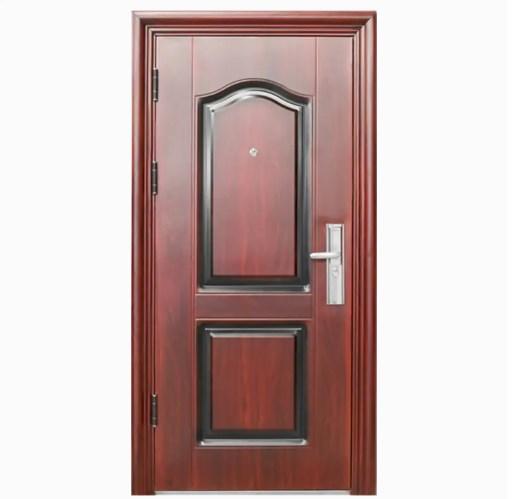The Classic Steel Door, renowned for its strength and durability, owes much of its reputation to the meticulous surface treatment processes it undergoes. These processes not only enhance the aesthetic appeal of the door but also play a crucial role in protecting it from the elements and ensuring its longevity. The surface treatment of a Classic Steel Door involves several stages, each designed to achieve specific outcomes that contribute to the door's overall performance and appearance.
The initial stage of surface treatment for a Classic Steel Door typically involves cleaning the raw steel to remove any impurities or contaminants. This step is essential to ensure that the subsequent coatings adhere properly to the surface. The cleaning process may involve the use of chemical solutions or mechanical methods such as sandblasting, which not only cleans but also provides a rough surface for better adhesion of the coatings.
Following the cleaning process, the Classic Steel Door undergoes a series of protective treatments. One common method is galvanization, where the steel is coated with a layer of zinc. This zinc layer acts as a sacrificial anode, corroding in place of the steel and thus protecting the door from rust and corrosion. The galvanized surface also provides a base for further coatings, enhancing the door's resistance to environmental factors.
Another protective treatment is the application of a primer, which is a special type of paint designed to create a strong bond between the steel surface and the subsequent layers of paint. The primer also helps to seal any remaining pores in the steel, preventing moisture and other contaminants from reaching the metal and causing damage over time.
The Classic Steel Door then moves on to the painting stage, where it is coated with multiple layers of high-quality, durable paint. These paints are specifically formulated to withstand the rigors of outdoor environments, providing a vibrant and long-lasting finish. The paint not only enhances the visual appeal of the door but also adds an extra layer of protection against the elements.
In addition to the protective coatings, the Classic Steel Door may also undergo a process known as powder coating. This involves applying a dry powder that is electrostatically charged and then baked onto the surface of the door. The result is a hard, durable finish that is resistant to chipping, scratching, and fading. Powder coating also offers a wide range of color options, allowing for a high degree of customization in the appearance of the Classic Steel Door.
The final stage of surface treatment often involves a clear coat application. This clear layer is designed to provide a protective barrier over the colored paint, enhancing its resistance to UV rays, which can cause fading and degradation over time. The clear coat also gives the Classic Steel Door a glossy or matte finish, depending on the desired aesthetic.
Throughout the entire surface treatment process, the Classic Steel Door is subjected to rigorous quality control measures. Each stage is carefully monitored to ensure that the coatings are applied evenly and to the correct thickness, and that the door meets the highest standards of durability and appearance.
In conclusion, the surface treatment of a Classic Steel Door is a complex and multifaceted process that involves a series of carefully controlled steps. From the initial cleaning and preparation to the application of protective coatings and the final finishing touches, each stage is designed to enhance the door's resistance to the elements, its aesthetic appeal, and its overall performance. The result is a Classic Steel Door that not only looks great but also stands up to the test of time, providing lasting protection and value to its owners.


